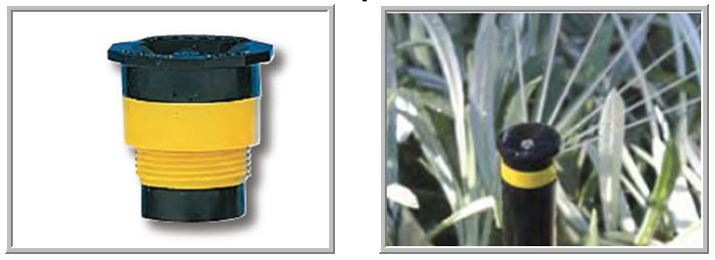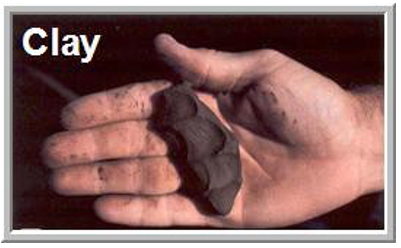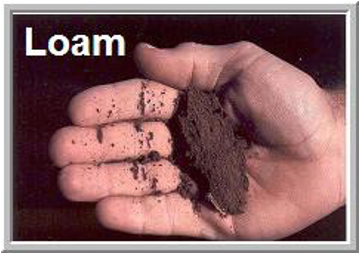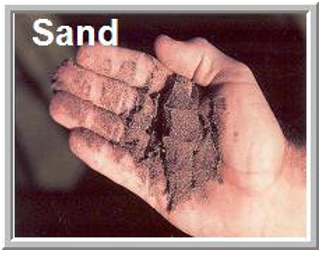Sprinkler Type
Different sprinkler types lay down different amounts of water and therefore require different run times. So the WeatherTRAK needs to know what type of head a station is using to determine how long it needs to run to keep your plants healthy.
Possible Sprinkler Type Settings
Spray Head

Description: Spray Heads or Pop-Ups are the most common type of heads used in a residential irrigation system. They generally rise 2” – 12” out of the ground and deliver a fixed or constant spray to the entire target area.
Different nozzles allow these heads to have different fixed spray patterns and different spray radius. Common spray patterns are Full Circle, Half Circle, and Quarter Circle. Common distances range from 5’ to 18’.
Common Brand Names: Rain Bird - 1800 series, Hunter - Pro-Spray Series, Toro - 570 series, Orbit - 5400 series, Signature - Pro 6300 series, K-Rain - RPS series
WeatherTRAK Defaults: Precip Rate – 1.7, Efficiency – 70%
Rotor Head

Description: Rotor Heads are used in residential applications to cover large open areas. They are gear-driven heads that have a single stream of water that rotates to cover the target area. The delivery stream on this type of head covers a distance of 15’ to 70’. The WeatherTRAK system defines the arc in three different terms: Full Circle, Part Circle, and Mixed.
a. Full Circle – The radius of the watering pattern is 360 degrees. In other words, the head turns all the way around to water plant material on all sides.
WeatherTRAK Defaults: Precip Rate – .50, Efficiency – 80%
b. Part Circle – The arc of the watering pattern ranges from 10 – 359 degrees. In other words, the head rotates back and forth between fixed positions on either side. This allows the heads to irrigate along the edges of the landscape without watering the adjacent hardscape.
WeatherTRAK Defaults: Precip Rate – 1.00, Efficiency – 80%
c. Mixed – This setting would indicate a combination of Full Circle heads and Part Circle Heads on the same station.
WeatherTRAK Defaults: Precip Rate – .75, Efficiency – 80%
Common Brand Names: Rain Bird – 5000 series; Hunter – PGP, PGJ, I-20, or I- 25; Toro – Mini 8, Super 700, Super 800, or TR50 series; Signature – Pro 6000 or 61000 series; Orbit – Voyager 2, Saturn III, or Titan series; K Rain – Dial-a- Nozzle or K8000 series; Weathermatic – Turbo 3 or CT70 series
Impact Heads

Description: Impact Heads are used in residential applications to cover large open areas. The application of the Impact Head is the same as the Rotor Head. The difference is how the two heads work. The Impact Head has a spring-loaded swing arm that breaks up the water stream as it turns the head. This gives the impact heads that signature “sprinkler” sound
(T-T-T-T-T-CHCHCHCH). Impact Heads have a single stream of water that rotates to cover the target area. The delivery stream on this type of head covers a distance of 15’ to 70’. The WeatherTRAK system defines the radius in three different terms: Full Circle, Part Circle, and Mixed.
a. Full Circle – The radius of the watering pattern is 360 degrees. In other words, the head turns all the way around to water plant material on all sides.
WeatherTRAK Defaults: Precip Rate – .50, Efficiency – 85%
b. Part Circle – The radius of the watering pattern ranges from 10 – 359 degrees. In other words, the head rotates back and forth between fixed positions on either side. This allows the heads to irrigate along the edges of the landscape without watering the adjacent hardscape.
WeatherTRAK Defaults: Precip Rate – 1.00, Efficiency – 85%
c. Mixed – This setting would indicate a combination of Full Circle heads and Part Circle Heads on the same station.
WeatherTRAK Defaults: Precip Rate – .75, Efficiency – 85%
Common Brand Names: Rain Bird – Maxi Paw series; Toro – Universal Impact series; Orbit – Jet or Satellite series
Stream Rotors

Description: The Stream Rotor has the same body size as a Rotor Head. The major difference is that the Stream Rotor has the “water fingers” spray pattern, or many small rotating streams rather than one large stream. The radius of this type of head ranges from 90 – 360 degrees. These heads have a distance range of 15 – 30 feet.
Common Brand Names: Toro 300 series
WeatherTRAK Defaults: Precip Rate – .65, Efficiency – 75%
Bubbler

Description: The Bubbler is commonly used for garden systems and shrub and tree stations. It is designed to flood the garden area to achieve deep root watering. This type of head is ideal for stations that have plant types that like to have the soil watered without getting flowers or foliage wet.
Common Name Brands: Rain Bird – 1300 series; Hunter – PCB, PCN, or AFB series; Toro – Flood Bubbler series; Orbit – Mushroom Bubbler series; Weathermatic – 106 series
WeatherTRAK Defaults: Precip Rate – 2.55, Efficiency – 90%
Drip Emitter

Description: Drip Emitter irrigation is designed to save water by slowly delivering water right at the base or stem of the plant. To do this a drip-feed line is run throughout a garden area and an emitter is plugged in for each plant individually, and that water is directed to the base of the plant. When done properly Drip Emitters are the most efficient way to deliver water as practically no water is lost to wind, run-off, deep soil percolation, or evaporation. This is why drip irrigation is commonly used in high efficiency and/or xeriscape applications.
Common Name Brands: Rain Bird – PC or xeribug series; Hunter – Solo-Drip, Trio-Drip, or Halo-Spray series; Toro – Orbit –Weathermatic – ProSec or D2 series
WeatherTRAK Defaults: Precip Rate – 1.5, Efficiency – 90%
Stream Spray

Description: The Stream Spray is a specialized type of nozzle that has been designed for sloped irrigation zones. These nozzles are installed on the standard spray head and use adjusted delivery angle and slower precipitation rates to address the challenges of watering slopes. These heads also have the “fingers of water”, similar to Stream Rotors, except they do not rotate.
Common Name Brands: Toro – Stream Spray Series;
WeatherTRAK Defaults: Precip Rate – .75, Efficiency – 70%
High-Efficiency Spray Head

Description: The High-Efficiency Spray Head is the newest kind of nozzle in the irrigation marketplace. This type of nozzle replaces the nozzle of existing Spray Heads. The nozzle then delivers the water using the “fingers of water” technique. This has two effects on the water. First, it delivers the water in larger drops, making it easier to predict where the drop will land. It also slows down the delivery rate of the irrigation to maximize infiltration and minimize runoff. When used properly, these heads conserve water compared to their Spray Head counterparts. For This Reason, These Heads Qualify For Conservation Rebates From Many Water Districts Across The Country.
Common Name Brands: Rain Bird – Rotary Nozzle series; Hunter – MP Rotator Series; Toro – Precision Series
Underground Drip Tubing

Description: This type of irrigation is designed to deliver water directly to the root system of the plants. To do this the special pipe is installed underground in a grid pattern. The pipe has holes in it that allow water to slowly disperse into the ground in a nice even pattern right at root level. This completely eliminates water being lost or misdirected due to wind or evaporation.
Common Name Brands: Netafim – Dripnet or Uniram series
Soil Type
Different soils absorb and store water differently, requiring different best irrigation practices. WeatherTRAK needs to know what type of soil you are growing your plants in, so we know how to apply the irrigation cycles to make the best use of the water you are laying down. For the WeatherTRAK Soil Type setting, please consider the “Sandy” setting and the “Clay” setting for extreme soil types, like Florida beach sand and Alabama Clay. Unless you have an extreme soil type, it is recommended that you program your controller with
“Sandy Loam”, “Loam”, or “Clay Loam” for best results.
Possible Soil Settings
Sandy
Sandy soil is more porous and creates a more frequent watering program since water is not retained.
Sandy Loam
Sandy Loam is a combination of Sandy and Loam soil types.
Loam
Loam soil is considered ideal for planting because it has a balance of sand, silt, and clay. It retains nutrients and water.
Clay Loam
Clay Loam is a combination of Clay and Loam soil types.
Clay
Clay soil is dense and creates more cycles and longer soaks to absorb water without runoff.
Soil Test
The easiest way to test the soil in your yard is to grab a handful of moist soil and squeeze it in your hand. When you open your hand:
If the sample keeps its shape and you can see your fingerprints your soil tends to be more clay.

If the sample keeps its shape but you can not see the finer details of your hand then your soil tends to be more loam.

And, if the sample fails to keep its shape it tends to be more sand.

Plant Type
Different plant types use different amounts of water in response to ET. For example, your lawn needs more water than your bushes do. WeatherTRAK needs to know what type of plant you are growing to determine how much water it needs to stay healthy.
Possible Plant Type Settings
Cool Season Turf
Common Examples: Bentgrass, Bluegrass, Fescue, Ryegrass
Warm Season Turf
Common Examples: Bermuda grass, Kikuyu grass, Paspalum, St. Augustine grass, Zoysiagrass
Combined Turf
Common Examples: Combination of warm and cool-season turf
Flowers
Common Examples: Seasonal Color (Pansies, Petunias, Marigolds, Impatiens, etc.)
Trees
Common Examples: Birch, Magnolia, Pine, Pistache, Sycamore, Ficus, Willow, Eucalyptus, Fruit trees
Shrubs - High Water
Common Examples: Calla, Hydrangea, Vinca
Shrubs - Med Water
Common Examples: Azalea, Agapanthus, Bougainvillea, Daylily, Escallonia, Ferns, Geranium, Holly, Hibiscus, Jacaranda Trees, Japanese Maple, Morning Glory, Palms, Passion Flower, Red Apple Rhododendron, Rosa Banksias, Roses, Star Jasmine
Shrubs - Low Water
Common Examples: Acacia, Ice Plant, Ivy, Juniper, Manzanita, Myoporum, Oak Trees, Oleander, Olive Trees, Pyrocantha
Mixed - High Water
Common Examples: “Mixed” plant type indicates there are multiple types of plants on this station. “High Water” indicates that the highest water consuming plant on this station is similar to those listed with the “Flowers”, “Trees”, or “Shrubs - High Water Use”.
Mixed - Med Water
Common Examples: “Mixed” plant type indicates there are multiple types of plants on this station. “Med Water” indicates that the highest water-consuming plant on this station is similar to those listed with the “Shrubs - Medium Water Use”.
Mixed - Low Water
Common Examples: “Mixed” plant type indicates there are multiple types of plants on this station. “Low Water” indicates that the highest water-consuming plant on this station is similar to those listed with the “Shrubs - Low Water Use”.
Native Shrubs/Trees
Common Examples: Ceanothus, Coyote Brush
Native Grasses
Common Examples: Ornamental Grasses
Custom Plant or Turf
Common Examples: The “Custom Plant or Custom Turf” settings are only for the most advanced WeatherTRAK users. This feature allows you to program in the Crop Coefficient for any specific plant. For example, if you have a station on your irrigation system specifically for your rose garden, you can program the “Custom Plant” setting with the Crop Coefficient for roses. Then the WeatherTRAK will take that Crop Coefficient and combine it with the rest of the irrigation variables to calculate an optimized irrigation schedule for your roses. In general, you can contact your local Agricultural University to find Crop Coefficient information.
Microclimate
Different amounts of sun exposure make plants burn through different amounts of water. WeatherTRAK needs to know how much sun your plants are exposed to so it can properly account for how much water this station is using, and therefore how much water needs to be replaced by irrigation. The key to properly diagnosing the microclimate is to use the area or plant on the station that receives the most sun. Always program the highest water user on the station or that plant, or the area will be receiving less water than it needs and suffer as a result.
Possible Microclimate Settings
Sunny All Day
Sunny Most of the Day
Shady Most of the Day
Shady All Day
Slope
Water is heavy and it runs downhill. Irrigation water creates “runoff”, or water that is wasted by collecting somewhere other than the target area. The steeper the hill, the faster water will begin to runoff.
WeatherTRAK needs to know the slope of a station so it can break the irrigation cycle up in a way that it never puts down more water than your site can absorb at once. As a rule of thumb, it is always better to overestimate the slope.
Remember that changing the slope will not change the total number of minutes a station runs in a night, it will only change how the controller breaks up that total run time to make sure that water is staying where we put it.
Possible Slope Settings
None/Slight
0% to 5% slope
Gentle
6% to 8% slope
Mild
9% to 12%
Moderate
13% to 20%
Steep
Above 20%




